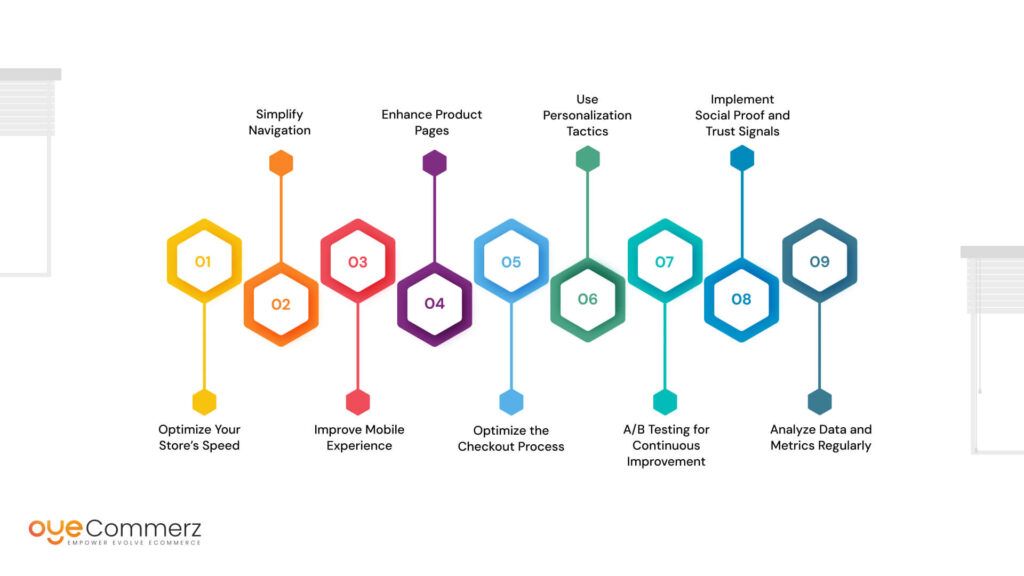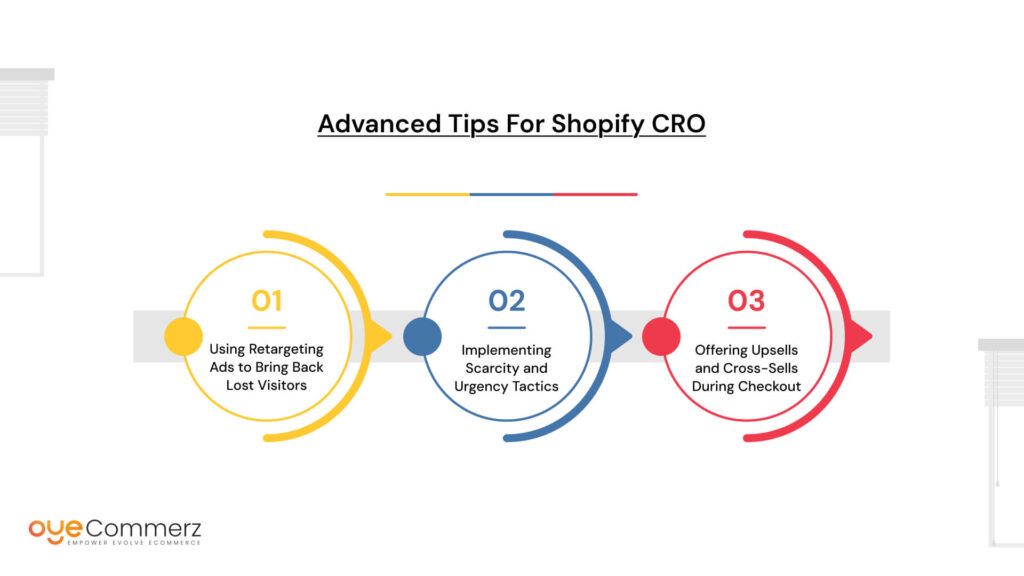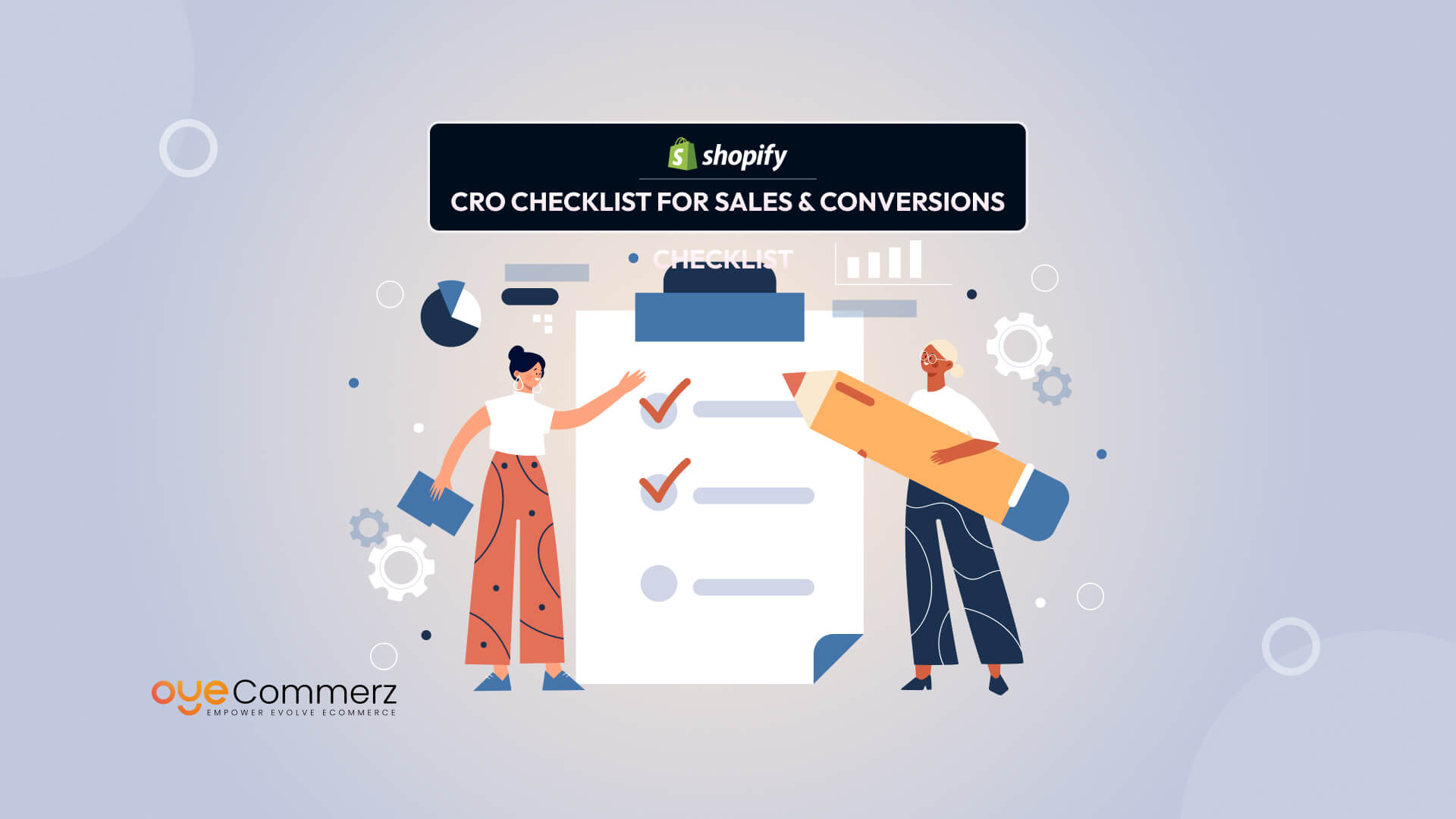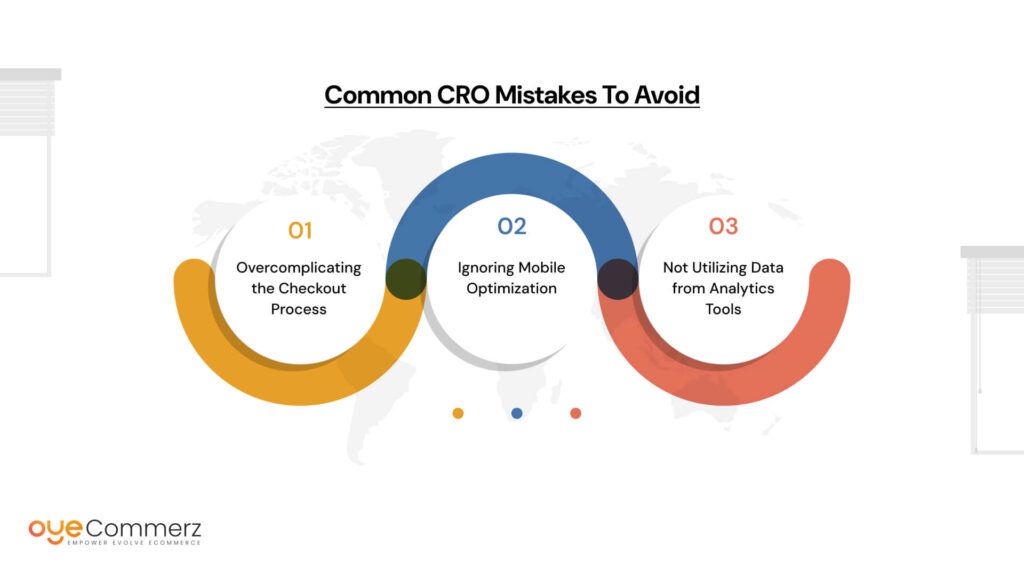Did you know that just a 1-second delay in page load time can result in a 7% decrease in conversions? If you’re running a Shopify store, every second counts when it comes to turning visitors into paying customers. Conversion Rate Optimization (CRO) is the art and science of improving your store’s user experience to increase the likelihood that visitors complete a purchase. Whether you’re just starting or looking to boost your existing store’s performance, mastering CRO is essential for maximizing your Shopify store’s potential. From optimizing your website’s speed to simplifying the checkout process, CRO helps create a seamless shopping experience that drives more sales and improves your bottom line.
This blog will provide you with a complete Shopify CRO checklist, covering essential steps you can take to optimize your store for higher conversions. Whether you’re a Shopify newbie or an experienced merchant, these actionable insights will help you increase sales and achieve sustained growth.
Table of Contents
ToggleUnderstanding the Basics of Shopify CRO
What is CRO?
Conversion Rate Optimization (CRO) is the process of enhancing the effectiveness of your Shopify store to convert visitors into paying customers. It involves using data-driven strategies to improve various aspects of the customer journey, from site design to checkout processes. CRO is essential for eCommerce because even a small improvement in conversion rate can significantly boost sales and profits without needing to increase traffic. By optimizing your store’s performance, you ensure that every visitor has the best chance of completing a purchase.
Why Shopify Store Owners Need to Focus on CRO
CRO is vital for Shopify store owners for several key reasons:
- Higher ROI: Investing in CRO is often more cost-effective than investing in new customer acquisition. A higher conversion rate means more sales from your existing traffic, increasing your return on investment (ROI).
- Reduced Bounce Rates: A streamlined and optimized store keeps customers engaged and reduces bounce rates. If your store loads slowly or is hard to navigate, customers are more likely to leave before they make a purchase.
- Improved User Experience: A great user experience directly translates into better customer satisfaction and loyalty. When your store is easy to use, fast, and intuitive, shoppers are more likely to return and refer others.
- Increased Sales: At the core of CRO is the goal of maximizing sales. Optimizing your store to meet customer needs leads to higher conversion rates and ultimately more revenue for your business.
Common CRO Challenges for Shopify Stores
Many Shopify store owners face common challenges that can hinder conversion rates. Some of the most prevalent issues include:
- Slow Load Times: Speed is critical in eCommerce. A slow website can lead to frustrated visitors and abandoned carts. Customers expect fast, responsive pages, and if your site doesn’t deliver, they’ll leave before they have the chance to make a purchase.
- Confusing Navigation: If customers can’t easily find what they’re looking for, they’ll likely leave without making a purchase. Clear, organized menus, a functional search bar, and intuitive product categories are essential for guiding visitors through your store.
- Checkout Issues: A complicated or lengthy checkout process is one of the leading causes of cart abandonment. If shoppers encounter friction at the checkout stage, such as hidden fees, limited payment options, or a lack of guest checkout, they’re less likely to complete their purchase.
Addressing these challenges with CRO techniques can help streamline your store, improving both the shopping experience and conversion rates.
The Shopify CRO Checklist

1. Optimize Your Store’s Speed
- Importance of Fast-Loading Pages: Speed is a critical factor in the user experience. If your Shopify store takes too long to load, visitors will quickly lose patience and leave, resulting in missed sales opportunities. A fast-loading site also positively impacts SEO, improving your search engine rankings.
- Tools to Check Site Speed:
- Google PageSpeed Insights: This tool analyzes your website’s performance and provides suggestions for improvement.
- Shopify’s Speed Reports: Shopify offers built-in reports that track your store’s performance and provide actionable insights.
- Quick Tips to Improve Speed:
- Image Optimization: Compress large images without sacrificing quality using tools like TinyPNG or Shopify’s built-in image optimization.
- App Management: Remove any unnecessary apps or plugins that might be slowing down your site.
- Minimize Redirects: Reduce the number of redirects on your site to improve load times.
- Use a Content Delivery Network (CDN): A CDN helps deliver content to visitors faster by storing it across multiple servers worldwide.
2. Simplify Navigation
- Easy-to-Use Menus for a Seamless User Experience: Ensure your navigation is simple and intuitive. Categorize your products logically, making it easy for visitors to find what they’re looking for without unnecessary clicks.
- Clear Product Categorization and Filters: Make it easy for customers to filter products by categories such as price, size, color, and other attributes. This helps customers find the perfect product more quickly, enhancing their shopping experience.
- Importance of Search Functionality and How to Optimize It: A powerful search bar can improve user experience significantly. Ensure that your search bar is easily visible and optimized for product searches. Consider using Shopify’s search filters and ensuring it returns relevant results quickly.
3. Improve Mobile Experience
- Mobile Responsiveness and the Need for Mobile-Friendly Designs: With more shoppers browsing and purchasing on mobile devices, it’s essential that your store is mobile-optimized. A responsive design automatically adjusts to different screen sizes, providing a seamless experience across all devices.
- Testing Mobile Versions and Ensuring Ease of Use: Regularly test the mobile version of your store to ensure the layout, images, and product descriptions look good and are easy to read on smaller screens.
- Optimizing Images and Content for Mobile Screens: Ensure that images are compressed for faster loading times on mobile devices. Use responsive images that adjust their size based on the screen size to avoid slow loading times.
4. Enhance Product Pages
- High-Quality Product Images and Detailed Descriptions: Product images should be clear, high-resolution, and showcase the product from multiple angles. Include detailed descriptions with all relevant information such as dimensions, materials, and benefits to help customers make informed purchase decisions.
- Adding Product Reviews and Social Proof: Customer reviews and ratings provide social proof, which is crucial for building trust with potential buyers. Encourage satisfied customers to leave reviews and display them prominently on product pages.
- The Importance of Clear Calls-to-Action (CTAs) on Product Pages: Your CTA buttons (e.g., “Add to Cart” or “Buy Now”) should be clearly visible and compelling. Use contrasting colors and concise text to prompt action.
5. Optimize the Checkout Process
- Streamlining the Checkout Flow to Reduce Cart Abandonment: A complicated checkout process can cause frustration and result in abandoned carts. Simplify the process by reducing the number of steps and form fields.
- Offering Multiple Payment Options: Provide various payment methods such as credit cards, PayPal, Apple Pay, and other regional payment options to cater to a wider range of customers.
- Implementing a Guest Checkout Option: Allowing customers to check out without creating an account eliminates friction and speeds up the process, increasing the likelihood of completing the sale.
6. Use Personalization Tactics
- Tailoring Product Recommendations: Use personalized product recommendations based on browsing history or past purchases. Tools like Shopify’s built-in recommendations or third-party apps can help with this.
- Personalized Email Marketing Based on Customer Behavior: Use email automation tools to send personalized emails with product recommendations, discounts, or reminders based on customer activity on your site.
- Dynamic Content on the Homepage and Product Pages: Display dynamic content like personalized banners, recommended products, or targeted offers based on a visitor’s behavior or demographics.
7. A/B Testing for Continuous Improvement
- Why A/B Testing Matters for CRO: A/B testing allows you to test different versions of your website to see which elements perform better. By continually testing and optimizing, you can improve your conversion rate over time.
- Key Elements to Test:
- Product images (e.g., lifestyle vs. white background).
- CTAs (e.g., different wording or button colors).
- Checkout process (e.g., simplified vs. detailed forms).
- Tools for A/B Testing on Shopify: Use tools like Optimizely, Google Optimize, or Shopify’s built-in A/B testing features to create and analyze test variations.
8. Implement Social Proof and Trust Signals
- Showcasing Customer Reviews and Ratings: Display positive customer reviews on product pages, checkout pages, and homepages to build trust with potential customers.
- Adding Trust Badges, Secure Payment Icons, and Clear Return Policies: Display security icons (SSL certificates, payment security) and clear return and refund policies on checkout pages to reassure customers that their data is safe and that they can shop with confidence.
- Leveraging Testimonials and Case Studies: Use customer testimonials or case studies on product pages or your homepage to showcase success stories and build credibility.
9. Analyze Data and Metrics Regularly
- Key Metrics to Track:
- Conversion rates: Measure the percentage of visitors who make a purchase.
- Bounce rates: Track how many visitors leave your site without interacting.
- Average order value: Monitor how much customers spend per order.
- Using Shopify Analytics and Google Analytics for Insights: Shopify provides detailed analytics to track performance, while Google Analytics offers deeper insights into user behavior.
- Understanding User Behavior with Heatmaps and Session Recordings: Tools like Hotjar or Lucky Orange provide heatmaps and session recordings to visualize how users interact with your site, helping you identify areas for improvement.
Advanced Tips for Shopify CRO

1. Using Retargeting Ads to Bring Back Lost Visitors
One of the most effective ways to increase conversions is by bringing back visitors who didn’t complete their purchase. Retargeting ads allow you to display personalized ads to users who previously visited your store but didn’t make a purchase. By reminding them of products they viewed or added to their cart, you can reignite interest and encourage them to return and complete their transaction.
How to Implement Retargeting Ads:
- Use platforms like Facebook Ads, Google Ads, or Shopify’s integration with retargeting apps to create custom audiences based on users who visited specific product pages or abandoned their carts.
- Craft engaging ad copy that reminds customers of the products they interacted with, offering a special discount or incentive to complete their purchase.
- Optimize the timing of these ads to show up within hours or a few days after the customer has left your site.
2. Implementing Scarcity and Urgency Tactics
Creating a sense of urgency can encourage customers to take immediate action. Scarcity tactics, such as showing low-stock indicators or offering limited-time promotions, play on the fear of missing out (FOMO), which can significantly boost conversions.
How to Implement Scarcity and Urgency Tactics:
- Limited-Time Offers: Display countdown timers on product pages, in the cart, or during checkout to indicate that a sale or promotion is ending soon. This can push customers to make quicker purchasing decisions.
- Low-Stock Indicators: Show messages such as “Only 3 left in stock!” or “Hurry, only a few items remaining!” next to product listings. This encourages urgency and can help increase sales for high-demand items.
- Flash Sales: Offer short-term flash sales, sending alerts to subscribers or retargeted visitors about the limited-time discount or special offer, urging them to act fast.
3. Offering Upsells and Cross-Sells During Checkout
Maximizing each customer’s purchase is a key aspect of improving conversion rates. Upselling and cross-selling are effective strategies to increase the average order value (AOV) and generate more revenue from each transaction.
How to Implement Upsells and Cross-Sells:
- Upselling: Suggest a more expensive version of the product the customer is purchasing. For example, if a customer is buying a laptop, offer an upgraded model with better features, or an extended warranty.
- Cross-Selling: Recommend complementary products that enhance the customer’s primary purchase. For example, if a customer buys a pair of shoes, suggest related items like socks, shoe cleaners, or insoles.
- Use Shopify apps like Bold Upsell or Frequently Bought Together to automate these recommendations and ensure they appear at the right stage in the checkout process.
- Display upsell and cross-sell suggestions in subtle, non-intrusive ways to ensure they enhance the customer experience without causing disruption or frustration.
By incorporating these advanced tactics into your Shopify store, you can boost conversions, increase revenue, and create a more personalized shopping experience for your customers.
Common CRO Mistakes to Avoid
1. Overcomplicating the Checkout Process
One of the most common mistakes Shopify store owners make is creating a checkout process that is too complicated. A lengthy or confusing checkout flow can cause frustration and lead to cart abandonment. Customers want a simple, fast, and secure way to complete their purchase, and any unnecessary steps can drive them away.
How to Avoid This Mistake:
- Simplify the Steps: Reduce the number of pages and form fields required during checkout. The fewer steps, the better. Consider using a one-page checkout to streamline the process.
- Enable Guest Checkout: Forcing customers to create an account can create friction. Allowing a guest checkout option will help speed up the process and reduce barriers to purchase.
- Progress Indicators: Show customers where they are in the checkout process, so they feel more in control and less overwhelmed.
2. Ignoring Mobile Optimization
With an increasing number of customers shopping on mobile devices, neglecting to optimize your store for mobile is a major mistake. A website that’s not mobile-friendly can lead to poor user experience, slow loading times, and a higher bounce rate, all of which negatively impact conversions.
How to Avoid This Mistake:
- Mobile-First Design: Ensure that your theme is mobile-responsive, meaning it automatically adjusts to different screen sizes. Shopify offers many themes that are optimized for mobile devices.
- Test Mobile Usability Regularly: Regularly test your store’s mobile version to ensure that it loads quickly, the content is easy to read, and the buttons and navigation are easy to use.
- Optimize for Touchscreen: Ensure buttons and links are large enough for easy tapping. Check that images, fonts, and menus scale correctly for mobile users.
3. Not Utilizing Data from Analytics Tools
Ignoring the valuable insights provided by analytics tools can hinder your CRO efforts. Data is essential for understanding how visitors are interacting with your store, which elements are performing well, and where there may be areas for improvement.
How to Avoid This Mistake:
- Use Shopify Analytics and Google Analytics: Track key metrics such as bounce rates, conversion rates, and average order value to assess your store’s performance. Use this data to identify areas that need improvement.
- Implement Heatmaps and Session Recordings: Tools like Hotjar or Lucky Orange can provide heatmaps and session recordings, helping you visualize user behavior on your site. This insight can guide changes to your design and layout for better conversions.
- Regularly Review and Adjust: Use data to continuously test and optimize your store. Run A/B tests, track your results, and refine your strategy to improve your store’s performance over time.
By avoiding these common mistakes, you can significantly improve your Shopify store’s conversion rate and create a better shopping experience for your customers. Keep things simple, mobile-friendly, and data-driven for the best results.
Ready to Optimize Your Shopify Store?
At Oyecommerz, we specialize in helping Shopify store owners improve their conversion rates through tailored CRO strategies. Whether you need speed optimization, mobile-friendly designs, or a seamless checkout experience, our expert team is here to guide you every step of the way.
Contact us today to start optimizing your store for higher sales and better customer engagement!
Let's build your custom Shopify app today!
Conclusion
Shopify Conversion Rate Optimization (CRO) is essential for boosting sales and improving your store’s performance. Key areas to focus on include optimizing site speed, simplifying navigation, ensuring mobile-friendliness, enhancing product pages with clear images and reviews, and streamlining the checkout process. Additionally, using personalization, A/B testing, and displaying trust signals can increase conversions. CRO is an ongoing process, so regularly testing and refining your store will help you continuously improve. Start implementing these strategies today to see better results in both conversions and sales.
Frequently Asked Questions
To gain traction on Shopify, focus on optimizing your store’s user experience, improving your marketing efforts, and driving targeted traffic. Key strategies include:
SEO optimization: Optimize your product pages and content for search engines to increase organic traffic.
Paid advertising: Use paid channels like Google Ads, Facebook Ads, and Instagram Ads to drive traffic to your store.
Social media marketing: Build a strong presence on platforms like Instagram, Facebook, and TikTok to engage your audience and drive sales.
Email marketing: Nurture relationships with your customers through personalized email campaigns, discounts, and promotions.
Offer incentives: Provide discounts, free shipping, or limited-time offers to encourage purchases.
Yes, Conversion Rate Optimization (CRO) is worth it! By improving your store’s conversion rate, you can make the most of your existing traffic and increase sales without needing more visitors. CRO involves optimizing your website’s elements—like speed, user experience, checkout process, and product pages—to boost conversions. This can lead to higher revenue, a better return on investment, and improved customer satisfaction.
A 30% conversion rate is exceptionally high, and most stores typically see rates between 1% to 3%. However, it’s important to consider the context: the average conversion rate for Shopify stores ranges from 1% to 2%. If you are seeing a 30% conversion rate, it means your store is performing incredibly well, and you likely have a highly optimized user experience, an engaged audience, or a highly targeted product.
A good conversion rate for Shopify generally falls between 1% to 2%. This can vary depending on factors like industry, store size, product type, and traffic quality. Stores that focus on user experience, fast checkout, and targeted marketing campaigns may see conversion rates on the higher end of this spectrum or even higher. Regularly testing and optimizing your store can help you achieve and maintain a high conversion rate.





